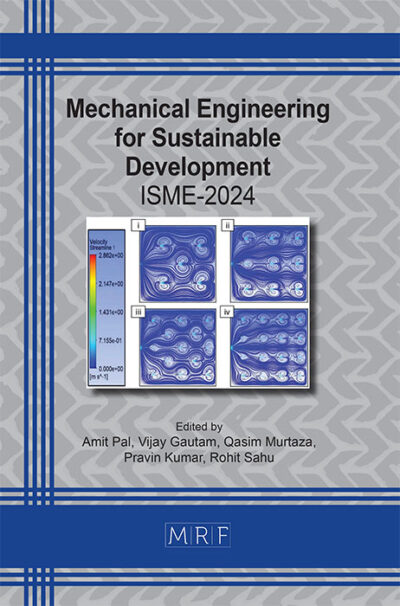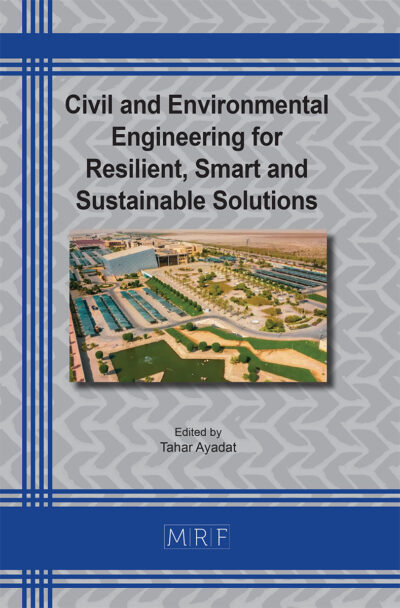An inquiry into Amman bus rapid transit elements
Rana Ibrahim ABID
Abstract. Bus rapid transit (BRT), labeled by modernized vehicles, dedicated bus ways, and utilization of intelligent transportation systems (ITS) technologies, is widely considered a cost-effective solution to provide affordable and effective transport service. This paper examines the infrastructure and operational elements of Amman BRT system using on-site investigations and open-source data. The research findings reveal that the public transportation sector in Amman has not experienced significant progress, with the Amman Bus and BRT corridor being the only notable advancements. The Amman BRT corridor consists of two physically separate routes with three main terminals: limited station design, minimal ITS capabilities, and an onboard fare collection system. Unfortunately, the absence of activated ITS at stations, Bus Priority at Traffic Signals, and off-board fare collection systems hinders the efficiency of Amman BRT. Limited integration with the transportation network reduces its potential and appeal to passengers. To improve the situation, it is necessary to enhance stations, activate ITS technologies, apply ride-station-based or trip-length-based fares, and integrate Amman BRT with the transportation network, especially the bus network. Additionally, more promotional efforts are required to inform the public of a project’s current status and future initiatives.
Keywords
Amman, Bus Rapid Transit, Infrastructure and Operational Elements, ITS, Public Transportation
Published online 2/25/2025, 13 pages
Copyright © 2025 by the author(s)
Published under license by Materials Research Forum LLC., Millersville PA, USA
Citation: Rana Ibrahim ABID, An inquiry into Amman bus rapid transit elements, Materials Research Proceedings, Vol. 48, pp 910-922, 2025
DOI: https://doi.org/10.21741/9781644903414-99
The article was published as article 99 of the book Civil and Environmental Engineering for Resilient, Smart and Sustainable Solutions
![]() Content from this work may be used under the terms of the Creative Commons Attribution 3.0 license. Any further distribution of this work must maintain attribution to the author(s) and the title of the work, journal citation and DOI.
Content from this work may be used under the terms of the Creative Commons Attribution 3.0 license. Any further distribution of this work must maintain attribution to the author(s) and the title of the work, journal citation and DOI.
References
[1] https://brtdata.org/
[2] D. Hensher, T. Golob, Bus rapid transit systems: A comparative assessment, Transportation. 35(4) (2008), 501-518. https://doi.org/10.1007/s11116-008-9163-y
[3] T. Deng, J. D. Nelson, Recent developments in bus rapid transit: A review of the literature, Transport Reviews. 31(1) (2011), 69-96.
[4] S. C. Wirasinghe, L. Kattan, M. M. Rahman J. Hubbell, R. Thilakaratne, S. Anowar, Bus rapid transit –a review, International Journal of Urban Sciences.17(1)(2013),1- 31. https://doi.org/10.1080/12265934.2013.777514
[5] E. Maeso-Gonzalez,P. Perez-Ceron, State of art of bus rapid transit transportation, European Transport Research Review. 6(2) (2014), 149-156. https://doi.org/10.1007/s12544-013-0113-1
[6] V. J. Racehorse, T. Parker, A. Sussman, A. Jian, G. Zhang, Bus rapid transit system deployment for high quality and cost-effective transit service: A comprehensive review and comparative analysis, IET Intelligent Transport Systems. 9(2) (2014), 175-183. https://doi.org/10.1049/iet-its.2013.0176
[7] A. Nikitas, M. Karlsson, A Worldwide State-of-the-art Analysis for Bus Rapid Transit: Looking for the Success Formula, Journal of Public Transportation. 18(1)(2015), 1-33. https://doi.org/10.5038/2375-0901.18.1.3
[8] L. Prayogi, Technical characteristics of bus rapid transit (BRT) systems that influence urban development, Master dissertation (2015).
[9] L. Galicia, R. Machemehl, Bus Rapid Transit Features and Deployment Phases for U.S. Cities,Journal of Public Transportation. 12(2)(2009), 23-38. http://doi.org/10.5038/2375-0901.12.2.2
[10] R. Diaz, D. Schneck, Bus Rapid Transit Technologies in the Americas: An Overview, Transportation Research Record: Journal of the Transportation Research Board. 1731 (1) (2000), 3-9. https://doi.org/10.3141/1731-01.
[11] H. Levinson, S. Zimmerman, J. Clinger, S. Rutherford, R. L. Smith, J. Cracknell, Bus Rapid Transit: Case Studies in Bus Rapid Transit, TCRP Report 90 (2003) (Washington, DC: Transportation Research Board of the National Academies).
[12] L. Wright, W. Hook, Bus rapid transit planning guide (3rd edition ed.) (2007). New York, United States: Institute for Transportation and Development Policy.
[13] D. Hinebaugh, Characteristics of Bus Rapid Transit for Decision-making (Washington: Federal Transit Administration) (2009).
[14] T. Deng, M. Ma, J. Wang, Evaluation of Bus Rapid Transit Implementation in China: Current Performance and Progress, Journal of Urban Planning and Development. 139(3)(2013), 226–234. https://doi.org/10.1061/(asce)up.1943-5444.0000150
[15] M. Breipthaupt, W C. Martins, P. Custodia, W. Hook, C. McCaul, The BRT Standard (New York: Institute for Transportation and Development Policy)(2014).
[16] S. Trubia, A. Severino, S. Curto, F. Arena, G. Pau, On BRT Spread around the World: Analysisof Some Particular Cities, Infrastructures. 5(10)(2020),88. https://doi.org/10.3390/infrastructures5100088
[17] H. Nur M. A, S. Hadiyoso, F. B. Belladina, D. N. Ramadan, I. Wijayanto,Tracking, Arrival Time Estimator, and Passenger Information System on Bus Rapid Transit (BRT), 2020 8th International Conference on Information and Communication Technology (ICoICT).
[18]M. Zhang, B. T.H. Yen, C. Mulley, N. Sipe, An investigation of the open-system Bus Rapid Transit (BRT) network and property values: The case of Brisbane, Australia, Transportation Research Part A: Policy and Practice. Volume 134(2020),16-34. https://doi.org/10.1016/j.tra.2020.01.021
[19] C. Hoonsiri, S. Chiarakorn, V. Kiattikomol, Using Combined Bus Rapid Transit and Buses in a Dedicated Bus Lane to Enhance Urban Transportation Sustainability, Sustainability. 13(6) (2021),3052. https://doi.org/10.3390/su13063052
[20] M. Kapadia, S. Sarkar, B. C. Roy, R. C. Sinha, Critical Appraisal of Parameters for Successful Implementation of BRTS in India, Periodica Polytechnica Transportation Engineering. 50(2) (2022),165–183. https://doi.org/10.3311/PPtr.16508
[21] H .N. Nguyen, S.S. Tu, M. H. Nguyen, Evaluating The Maiden Brt Corridor In Vietnam, Transport and Communications Science Journal. 71(4) (2020), 336-346. https://doi.org/10.25073/tcsj.71.4.3
[22]https://dosweb.dos.gov.jo/DataBank/Population/Population_Estimares/PopulationEstimates.pdf
[23] http://www.ammanbrt.jo/
[24] http://www.ammanbus.jo/
[25] https://brtguide.itdp.org/branch/master/guide/












